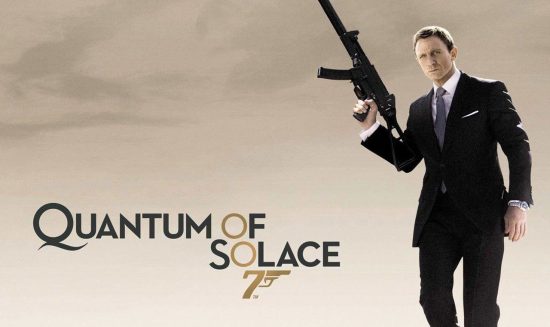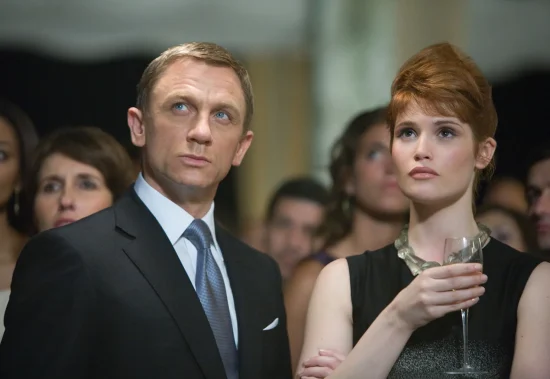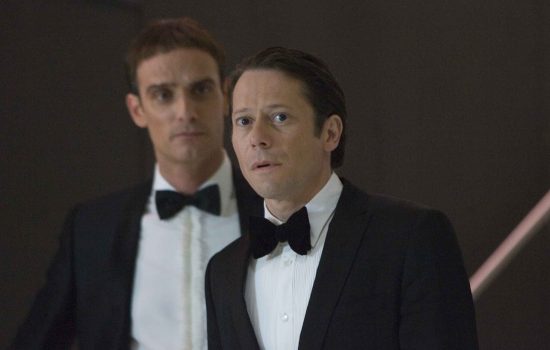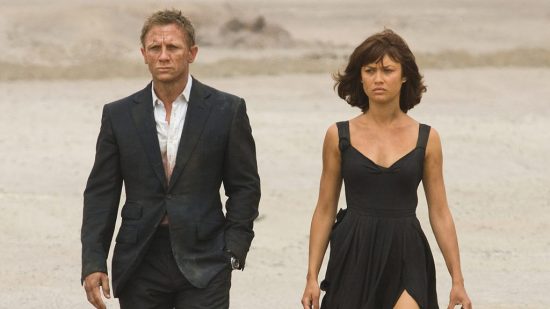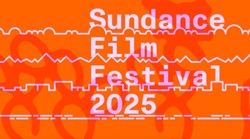Bond Blog: Quantum of Solace – A James Bond Retrospective
Quantum of Solace is one of my favourite Bond films. And I know that isn’t a popular opinion. On first watching it, I – along with everyone else – was disappointed. Casino Royale had set up the character so well and seemed so measured and by comparison, its follow-up felt too influenced by the Bourne films, way too frenetically edited and had a plot that got lost in the ricochets and machine-gunning. But re-watching significantly changed my opinion.
To begin with, this is the first Bond film that follows as a direct sequel. Others had hinted at the plots of previous films. Diamonds Are Forever was in fact supposed to be a film about revenging the death of Tracy Bond in On Her Majesty’s Secret Service before George Lazenby abandoned the role and Connery returned, rendering the idea defunct. Quantum of Solace could easily have been called Casino Royale 2: The Revenge. This would establish the series as a saga, rather than the usual episodic structure with its balance of amnesia and nostalgia. With Mr. White in the boot of his car, Bond races through the Italian mountains mere minutes from the end of the events of the last film. It is an amazing chase sequence, brilliantly shot and edited, I can only presume, on amphetamines. The song by Jack White and Alicia Keys is a thumping piece of rock. The subsequent foot chase in Sienna across the rooftops teeters on the verge of the ridiculous before jumping in with both feet.
The discovery of a mysterious criminal organisation called Quantum recalls SPECTRE and indeed will later be folded into that organisation. Mathieu Amalric is the leader Dominic Greene, a new agey entrepreneur who talks a green game but is actually looking to corner the market in world resources. There is a significant lack of wanting to destroy the world. In fact, the CIA is in bed with him and one imagines MI6 and Bond himself wouldn’t be that bothered if it wasn’t for the death of Vesper Lind. Bond’s mission of revenge is paired with that of Camille (Olga Kurylenko), who is out to kill a general associated with Greene because he murdered her family. The story is cribbed from Roman Polanski’s Chinatown, something about aquifers and water supply, but with the writer’s strike closing down the script when it was still only in a relatively early draft, plotting isn’t the film’s strongest suit. But this might not necessarily be that much of a weakness. Ultimately, Bond goes from A to B to C with a rationale and the wheels only come off in the last reel.
Mathis (Giancarlo Giannini) and Felix Leiter (Jeffrey Wright) both return, and though neither could be said to be Bond’s friend – he doesn’t seem to possess the emotional capacity to have friends – there is a sense that Bond’s world is expanding. Mathis in particular has one of the best moments of the film – essentially his death scene. It shows an older version of Bond and when 007 unceremoniously stows Mathis in a dumpster, it continues the commitment of Craig’s secret agent to not win any friends in the audience. 007 is leaner and more gritty, just like the film itself which is the shortest Bond movie in the franchise – another big plus. In some ways, he is a man trying to put himself back together. His pursuit of his enemies is – according to M – blinded by rage, but that rage, like the emotions aped by a psychopath, might be covering up an essential emptiness.
I grant that the film is by no means perfect. The exploding hotel at the end makes literally no sense at all. And given its slim running time, it could have afforded to slow down and allow the characters to actually fill their roles a little bit. Dominic Greene could have been given more to do for instance. But as it stands the film is one of the more exciting entrants into the franchise. Marc Foster keeps the pace breakneck throughout and Daniel Craig’s Bond continues to develop into a character who, unafraid of being dislikeable, feels more and more real. This is Bond with a genuine license to kill, an assassin who will calmly feel a man’s pulse while he bleeds out in front of him. He will cause all kinds of collateral damage – Gemma Arterton comes to a Goldfingery end via some oil – and will move on with nary a glance back. One of the consequences of writing this blog has been that I’ve been watching the movies in a constricted amount of time. Casino Royale and Quantum of Solace viewed together make one big movie, and as such taken together the best Bond films since Sean Connery put on the tux.

